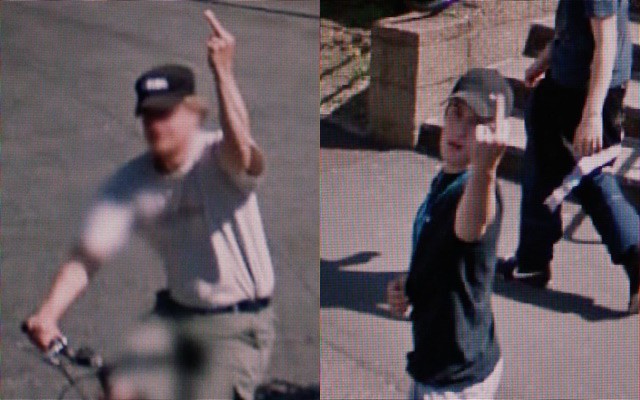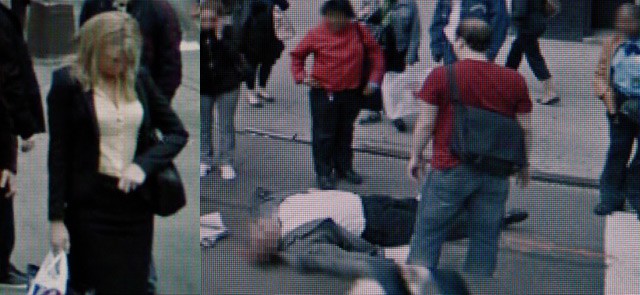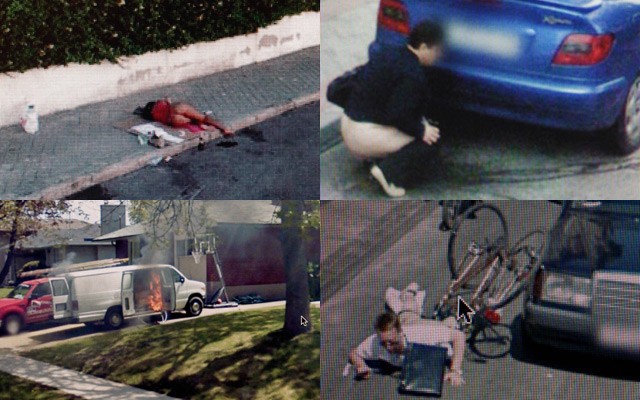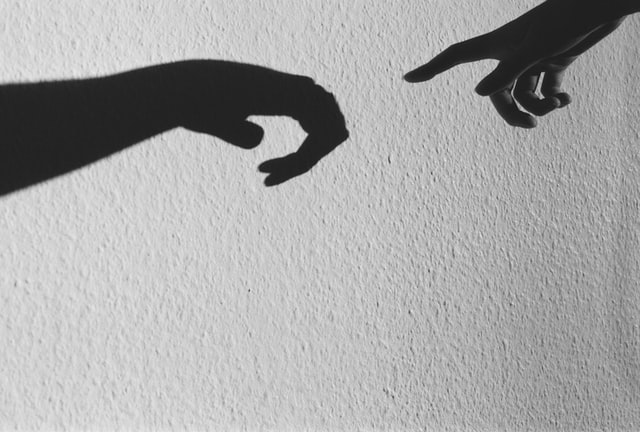Michael Wolf’s Exploration of Street Life through Google Street View
Finding Inspiration in Unexpected Places
Michael Wolf, a World Press Photo winning photographer, has long been captivated by the often unseen, darker sides of urban life. Known for his ability to capture the repetitive and depressing nature of modern city life, Wolf’s work focuses on the unnoticed and discarded remnants of the world around us. His images include subjects such as commuters sleeping against metro windows, homeless individuals residing in cardboard boxes, and factory workers lined up in meal queues. After living in Hong Kong for 16 years, Wolf relocated to Paris in 2008 due to his wife’s work. However, he found himself uninspired by what he described as “the world’s most boring city.”

Paris, with its clean streets and classical architecture, failed to provide the visual drama Wolf typically sought in his photography. He felt that every corner of Paris was frozen in time, looking just as it did a century ago. Furthermore, he was hindered by legal restrictions on street photography; if fewer than five people were captured in a shot, it could potentially trigger legal proceedings. Frustrated by his inability to find his usual photographic subjects, Wolf sought a new avenue to explore his art.
Discovering Google Street View as a Creative Outlet
In August 2008, Michael Wolf found an unlikely source of inspiration in Google Street View. This tool, which consists of countless photos taken by a Google car equipped with cameras, allowed Wolf to virtually explore streets and cities without ever leaving his home. Using the application, Wolf could “travel” through various urban landscapes by viewing the images that were captured from the car’s perspective every 5 meters.

Street View’s allure for Wolf lay in its raw, unfiltered depiction of the world a digital collection of moments that feel as though they are taken without permission, often with a voyeuristic quality. While Google owns the copyright for these images, they are captured without prior consent, and this aspect of digital surveillance was part of what intrigued Wolf. Over 280,000 German citizens had even requested that their homes be blurred out from the platform, highlighting the discomfort many feel about having their lives documented without their explicit approval.
Wolf added his own twist to the medium by photographing the Google Street View images directly from his computer screen, using a tripod and camera. Instead of simply taking screenshots, Wolf made sure to photograph the monitor itself, transforming the digital imagery into a tangible, photographic work of art. The resulting series, titled A Series of Unfortunate Events, took on a deeper layer of meaning, turning the viewer into a voyeur as they watched scenes of urban life unfold through the lens of Wolf’s photographs.
Wolf’s Artistic Critique of Google Street View
The Intersection of Surveillance and Art
Wolf’s series A Series of Unfortunate Events not only documents the hidden and mundane aspects of city life, but also engages with broader concerns about surveillance, privacy, and digital intrusion. The title of his first exhibition, We Are Watching You, served as a provocative commentary on the intrusive nature of Google’s Street View project. Wolf’s work delves into the tension between public accessibility and personal privacy, raising questions about how much of our lives are captured, archived, and viewed without our consent.
His exhibition, however, did not go unnoticed by Google. The company took issue with the exhibition’s title and the implications it carried. Wolf’s project was seen as “stirring the hornet’s nest,” as it directly challenged the ethical and legal implications of Google’s vast visual archive. The exhibition not only highlighted the “unfortunate events” captured by Street View but also subtly critiqued the motives behind such global data collection efforts. For Michael Wolf, the idea of the world being photographed and documented without permission was an uncomfortable reflection of modern digital culture a culture where personal boundaries are often blurred, and privacy is sacrificed for the sake of information gathering.

A New Form of Protest Through Imagery
In addition to capturing street life, Michael Wolf’s images also reflect the growing public unease and resistance to the surveillance practices facilitated by platforms like Google Street View. Some of the photographs in the collection depict “unfortunate” moments in which individuals are caught in compromising or ironic positions, emphasizing the randomness and vulnerability inherent in the digital documentation of everyday life. Other images in the series feature people actively protesting the Google vehicle with gestures, such as raising their hands in defiance or showing a middle finger, symbolizing a pushback against the surveillance state. These moments add an ironic layer to Michael Wolf’s body of work, merging the personal invasion of privacy with the public resistance to it.
Wolf’s creative exploration of Google Street View serves as both an artistic statement and a social commentary. His photographs allow viewers to engage with the concept of privacy in the digital age and question the growing power of surveillance technologies. By using the very tool that many see as invasive, Wolf forces us to confront the implications of living in a world where our every move can be captured, stored, and shared by digital giants like Google.
The Voyeuristic Nature of Digital Life
Perhaps one of the most striking aspects of Michael Wolf’s work is how it transforms ordinary Google Street View images into a voyeuristic experience. With each photograph, the viewer is invited to step into the scene, whether it’s a snapshot of a passerby or an intimate, unguarded moment captured on a busy street. The digital archive that Google has created is no longer just a tool for navigation or city exploration it becomes an unsettling record of our daily lives, where every gesture and glance is documented without context or permission.
Michael Wolf’s ability to extract beauty and meaning from these digital fragments forces us to reconsider how we interact with the world in the age of information. The photographer’s manipulation of this tool blurs the line between public and private life, highlighting the discomfort many feel about the loss of privacy in a hyper-connected world. His work calls attention to the paradox of living in a digital age: while we have access to more information than ever before, we are also more exposed, more vulnerable, and more subject to the gaze of others.
In conclusion, Michael Wolf’s project challenges the ethical implications of Google Street View while offering a reflection on the digital age’s surveillance culture. His photographs invite viewers to think critically about privacy, voyeurism, and the consequences of living in a world where digital archives of our lives are continuously growing and evolving. Through his unique perspective and provocative imagery, Michael Wolf captures the intersection of modern life and technology, urging us to reflect on the implications of this new, often uncomfortable, reality.





